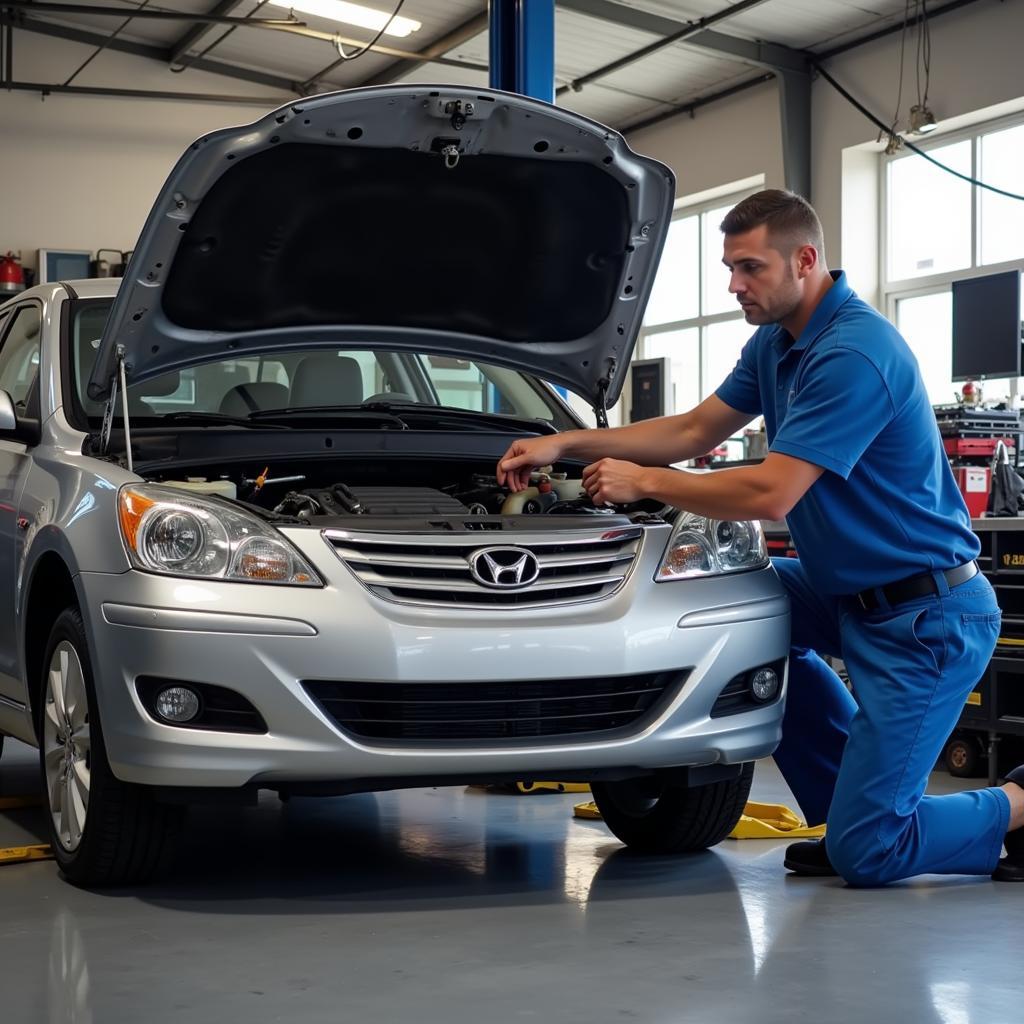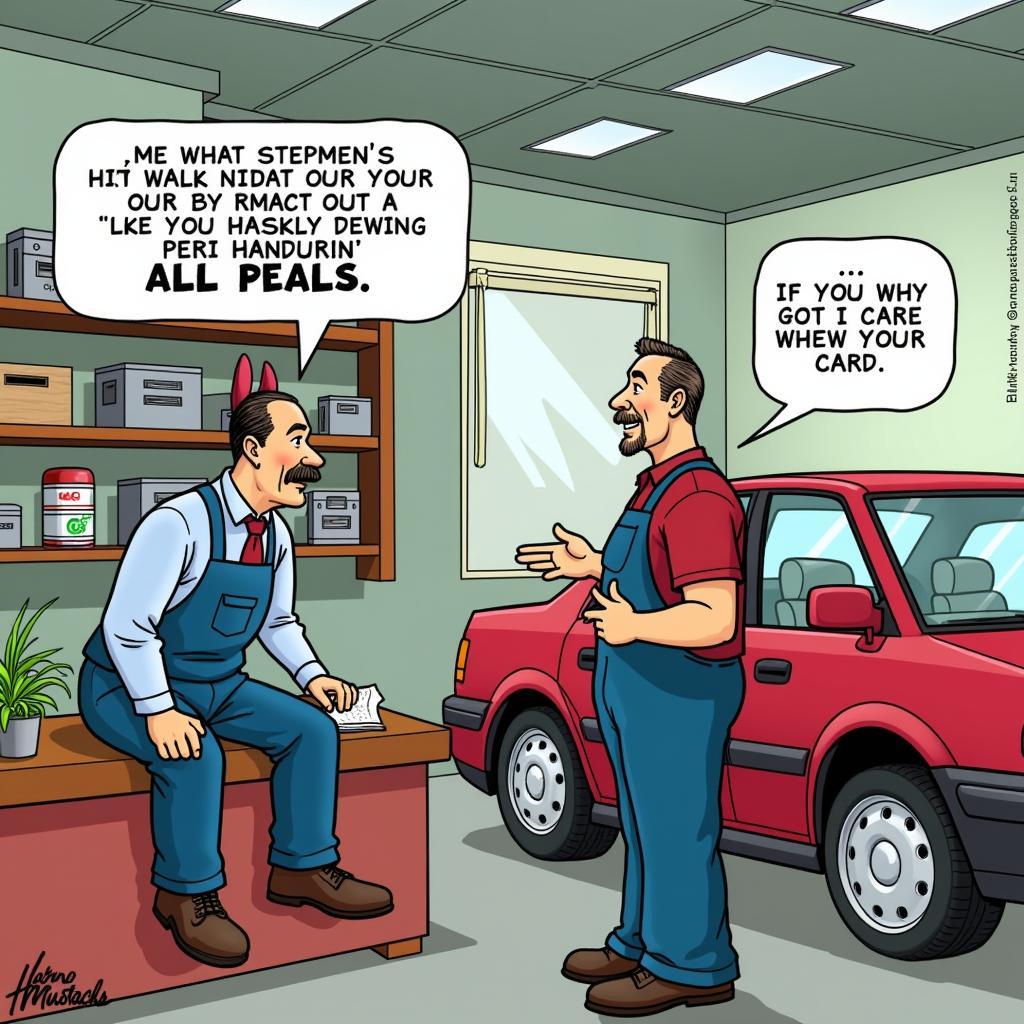A car warning light flashing on your dashboard can be a nerve-wracking experience. Understanding these “Car Warning Problem” indicators is crucial for maintaining your vehicle’s health and preventing costly repairs. This article serves as your comprehensive guide to deciphering those cryptic symbols and taking appropriate action.
If you’re experiencing transmission issues, you can find helpful information on our page about how to know if your car has transmission problems.
Decoding the Dashboard: Common Car Warning Problems
Your car’s dashboard is a communication hub, using various symbols to alert you to potential issues. Ignoring these “car warning problem” signals can lead to significant damage and expensive repairs. Let’s explore some of the most frequent warning lights and their meanings.
Check Engine Light: The Universal Warning
Perhaps the most notorious of all warning lights, the check engine light can indicate anything from a loose gas cap to a serious engine malfunction. While it can be tempting to dismiss it, especially if the car seems to be running fine, a prompt diagnosis is always recommended.
Brake System Warning: Don’t Ignore This One!
This warning light can signal low brake fluid, worn brake pads, or a problem with the ABS (Anti-lock Braking System). Ignoring this “car warning problem” can compromise your safety and lead to dangerous driving conditions. Immediate attention is required.
Oil Pressure Warning: The Lifeline of Your Engine
Low oil pressure can cause severe engine damage. This warning light indicates that the oil pump isn’t circulating oil effectively. Continuing to drive with low oil pressure can lead to catastrophic engine failure. Stop the car immediately and check the oil level.
 Low Oil Pressure Warning Light on Car Dashboard
Low Oil Pressure Warning Light on Car Dashboard
You can learn about specific warning symbols for different car models, like the Hyundai Sonata, on our page dedicated to car problem warning symbols for a Hyundai Sonata.
Troubleshooting Car Warning Problems: A Step-by-Step Guide
While some “car warning problem” indicators require professional attention, there are steps you can take to troubleshoot the issue before heading to a mechanic.
- Consult Your Owner’s Manual: This is your first and most important resource. It provides a comprehensive explanation of each warning light and recommended actions.
- Check the Obvious: Before panicking, check for simple solutions like a loose gas cap, low tire pressure, or a burnt-out bulb.
- Use an OBD-II Scanner: These affordable devices can plug into your car’s diagnostic port and provide more specific information about the problem.
- Seek Professional Help: If you’re unsure about the issue or the solution, it’s always best to consult a qualified mechanic.
When to Call a Mechanic
Certain warning lights warrant an immediate trip to the mechanic. These include the brake system warning, oil pressure warning, and any warning related to the engine cooling system.
“Ignoring a serious car warning problem is like ignoring a ticking time bomb,” says automotive expert, John Miller, ASE Certified Master Technician. “It’s always better to be safe than sorry when it comes to your car’s health.”
 Mechanic Diagnosing Car Problem with Diagnostic Tool
Mechanic Diagnosing Car Problem with Diagnostic Tool
If you’re curious about other car issues, you can check out our page about Caerleon cars problems.
Preventing Future Car Warning Problems
Regular maintenance is the best way to prevent “car warning problem” situations. Following your car’s recommended maintenance schedule, including oil changes, tire rotations, and brake inspections, can help identify and address potential problems before they become serious.
“Preventative maintenance is the key to a long and healthy car life,” advises Sarah Johnson, automotive engineer and consultant. “It’s a small investment that can save you a lot of money and headaches in the long run.”
 Car Undergoing Regular Maintenance in a Garage
Car Undergoing Regular Maintenance in a Garage
Conclusion
Understanding and addressing “car warning problem” indicators are essential aspects of car ownership. By being proactive and attentive to your car’s signals, you can ensure its longevity and your safety. Don’t hesitate to contact us at Autotippro for expert advice and assistance. You can reach us at +1 (641) 206-8880 or visit our office at 500 N St Mary’s St, San Antonio, TX 78205, United States.
If you’re interested in learning about cars from the 80s with fire problems, visit our page car from 80s that had fire problems.
FAQ
-
What should I do if my check engine light comes on? Consult your owner’s manual and consider using an OBD-II scanner. If the problem persists, consult a mechanic.
-
Is it safe to drive with the check engine light on? It depends on the severity of the problem. Some issues might be minor, while others could pose a safety risk. It’s best to get it checked out.
-
How often should I check my car’s fluids? Check your oil level monthly and other fluids every few months or as recommended in your owner’s manual.
-
What does the ABS light mean? It indicates a potential problem with the Anti-lock Braking System.
-
How can I prevent car warning problems? Regular maintenance is the key. Follow your car’s recommended maintenance schedule.
-
What if my car makes unusual noises? Any unusual noise should be investigated. It could be a sign of a developing problem.
-
Where can I find reliable car repair information? AutoTipPro provides expert advice and resources on car maintenance and repair.





Leave a Reply